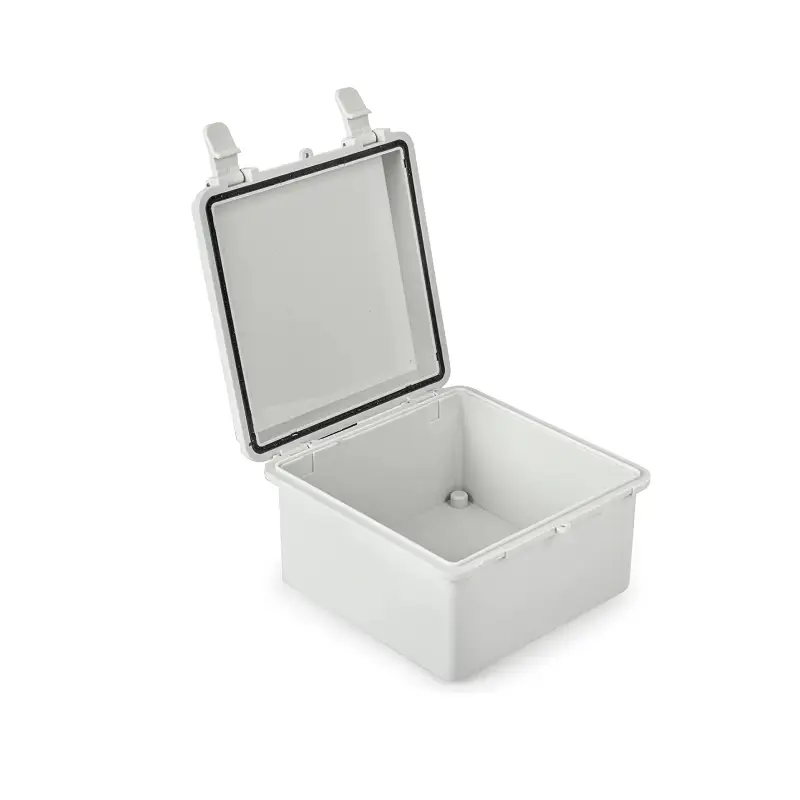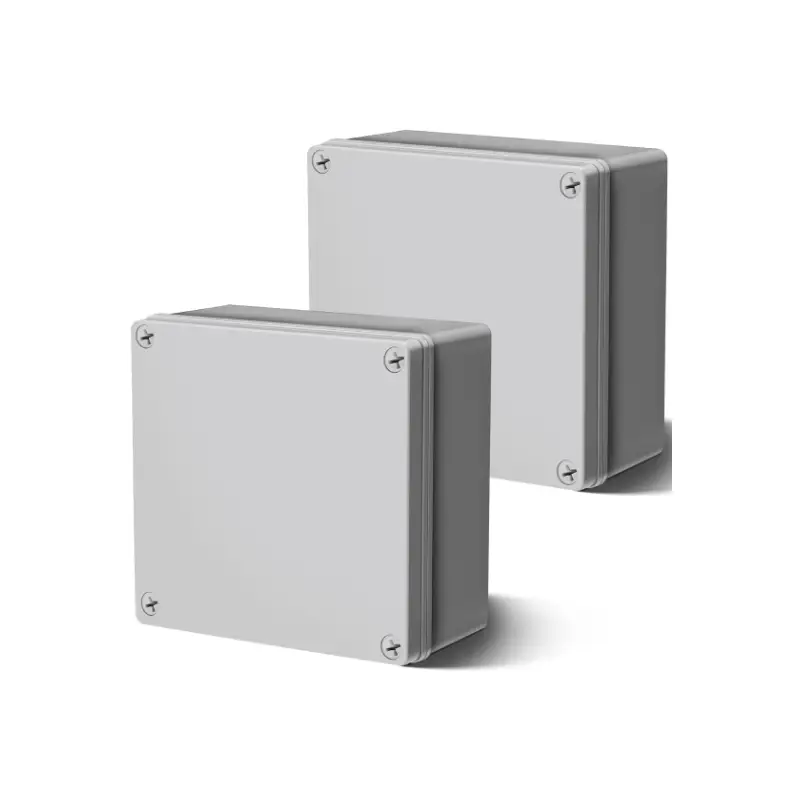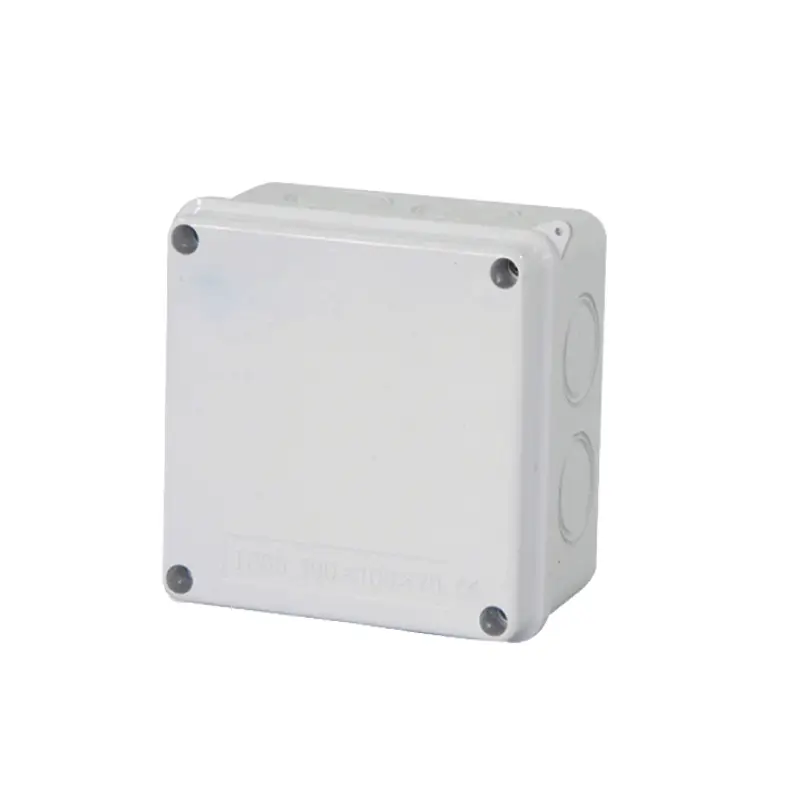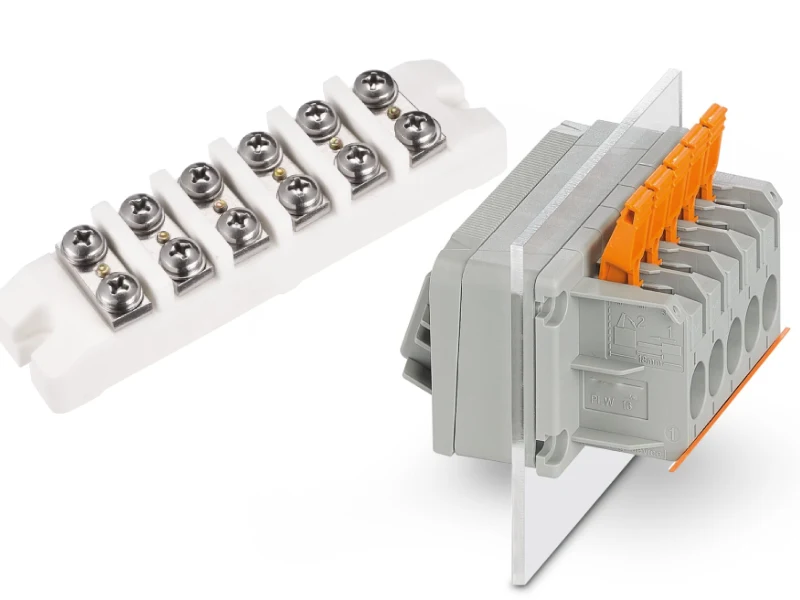In the industry of electrical installations, junction boxes and electrical boxes play crucial yet distinct roles. While both serve as protective enclosures for wiring connections, their purpose and design differ significantly. Understanding these differences is essential for ensuring safe and compliant electrical systems.
Electrical boxes, often referred to as outlet boxes or device boxes, are primarily designed to house electrical devices such as switches, receptacles, and light fixtures. They provide a secure mounting point for these devices and protect the wiring connections within. Junction boxes, on the other hand, are solely intended for joining or terminating electrical wires, without accommodating any devices.
What is a Junction Box



A junction box is an enclosure, typically made of metal or plastic, that protects electrical connections (wire splices) from the environment and accidental contact.
It serves as a central point where multiple wires can be joined together safely and neatly, ensuring electrical continuity and preventing hazards. Junction boxes are essential components in electrical wiring systems for both residential and commercial applications, providing a secure and organized way to extend or branch circuits.
What is an Electrical Box

An electrical box is a protective enclosure designed to house electrical components such as switches, outlets, light fixtures, and their associated wiring. Typically made of metal or plastic, it provides a secure mounting point for these devices and protects both the wiring connections and users from electrical hazards. Electrical boxes are integral to any electrical installation, ensuring safety, organization, and proper functioning of electrical devices throughout a building.
Junction Box vs Electrical Box

Exploring the nuances of electrical installations often brings us face-to-face with terms like “junction box” and “electrical box.” While both serve as protective enclosures within an electrical system, their primary purposes and functionalities differ significantly.
Understanding these distinctions is crucial for safe and effective wiring practices. Let’s delve into the key aspects that differentiate these essential components.
Primary Function
A junction box’s main role is to serve as a protective housing for wire connections, or splices. Within this enclosure, wires are joined together to extend circuits, branch power to different locations, or connect light fixtures.
The junction box itself doesn’t typically accommodate any user-operated devices. Its primary focus is on ensuring the safety and organization of these wire-to-wire connections, preventing accidental contact and shielding them from environmental factors like moisture and dust.
These boxes are designed to meet specific safety standards, providing a fire-resistant barrier that can contain potential electrical faults. By enclosing the connections, junction boxes minimize the risk of short circuits and electrical fires. They also offer a degree of mechanical protection to the wiring, safeguarding it from physical damage that could compromise the electrical system’s integrity.
Device Accommodation
In contrast to junction boxes, electrical boxes are specifically designed to house and support electrical devices that users interact with directly. This includes switches that control lighting or appliances, receptacles (outlets) that provide power for various equipment, and even light fixtures themselves, where the box serves as both a mounting point and a wiring enclosure.
The construction and design of electrical boxes often incorporate features that facilitate the mounting and secure attachment of these devices. This might include internal threads for screws, mounting brackets, or specific shapes and sizes tailored to different types of devices. The box provides a stable and safe platform for the device, ensuring it functions correctly and protects users from live electrical parts.
Location and Application
Junction boxes are commonly found in concealed locations within walls, ceilings, or floors, wherever wire splices are necessary to extend or branch circuits. They are essential for creating a complete and functional electrical system throughout a building, acting as hidden connection points that distribute power where needed.
Electrical boxes, on the other hand, are typically installed at points of use or control, making them accessible to occupants. You’ll find them at switch locations near doorways, outlet locations along walls, and ceiling or wall locations where light fixtures are mounted. Their placement is dictated by the need for user interaction or the positioning of an electrical appliance.
Wiring Configuration
The wiring within a junction box primarily involves connecting multiple wires together using appropriate connectors, such as wire nuts or terminal blocks. The focus is on creating secure and electrically sound joints between conductors. The box provides ample space to accommodate these connections and ensures they are contained safely.
Electrical boxes not only house wire connections but also provide a termination point for the device being installed. Wires are connected to the terminals on switches, outlets, or light fixtures within the box. The box’s size and shape are often chosen to accommodate both the wiring and the specific dimensions of the device being installed.
Accessibility
Junction boxes are generally not intended for regular access after installation. Once the wiring is complete and the cover is secured, they are meant to be maintenance-free unless a fault occurs. Their concealed locations reflect this infrequent need for access.
Electrical boxes, because they house user-interactive devices, are inherently accessible. Switches and outlets need to be operated, and light fixtures may require maintenance or replacement. The design of electrical boxes allows for easy access to the device and its wiring for installation, repair, or replacement.
Here’s a comparison table summarizing the key differences between junction boxes and electrical boxes:
| Feature | Junction Box | Electrical Box |
| Primary Function | Protects wire splices and connections | Houses and supports electrical devices |
| Device Accommodation | Typically does not house user devices | Designed to mount switches, outlets, light fixtures |
| Location | Concealed within walls, ceilings, floors | At points of use or control, accessible locations |
| Wiring Configuration | Focus on wire-to-wire connections/splices | Wiring connects to both devices and circuit wires |
| Accessibility | Generally not intended for regular access | Designed for access to devices for operation/maintenance |
How to Choose Junction Box and Electrical Box
Selecting the appropriate junction box or electrical box hinges on the specific wiring task and the components involved. For simple wire extensions or branching circuits requiring only connections, a junction box of suitable size and material (metal or non-metallic) is necessary, ensuring it meets local electrical codes regarding fill capacity and environment.
When installing devices like switches, outlets, or light fixtures, an electrical box designed for that purpose is essential, considering the device’s size, mounting requirements, and the number of wires entering the box.
Here’s a quick guide about the junction box and electrical box selection:
- Wiring Connections Only: Choose a junction box with adequate volume for the number and size of wires and connectors.
- Device Installation: Select an electrical box specifically designed for the type of device (switch, outlet, light fixture) being installed.
- Material Compatibility: Consider the environment (dry, damp, wet) and choose a box material (metal or non-metallic) appropriate for the conditions and wiring type.
- Code Compliance: Always ensure the chosen box meets local electrical codes and safety standards regarding size, mounting, and grounding.
- Accessibility (for Junction Boxes): While generally concealed, ensure future access is possible if required by code or potential maintenance needs.
Conclusion
In essence, while both junction boxes and electrical boxes serve as crucial enclosures for electrical connections, their primary functions and applications differ. Junction boxes mainly act as protective hubs for wire splices, ensuring safety and organization. Electrical boxes, however, offer mounting points for devices like switches and outlets, providing both protection and functionality.
Choosing the right enclosure depends on the specific wiring needs of the application. For simple wire connections and extensions, junction boxes are ideal. When integrating electrical devices, electrical boxes provide the necessary structure and support.
As Linkwell Electrics, we offer a comprehensive range of high-quality wholesale junction boxes to meet diverse electrical wiring requirements. Our durable and reliable boxes ensure safe and organized connections for your projects.




